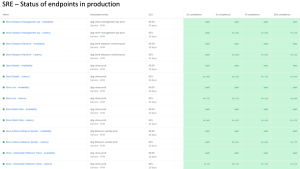 This is a guest post by Elias Terman, VP of Product Marketing at OneLogin, a leading provider of cloud-based identity and access management and a New Relic partner.
This is a guest post by Elias Terman, VP of Product Marketing at OneLogin, a leading provider of cloud-based identity and access management and a New Relic partner.
Identity and access management (IAM) plays an important role within organizations. Consider this real life example. You hire a new employee and issue him a corporate email address and login credentials. He uses his corporate email address to sign in to various systems you have implemented across your organization like email, project tracking and web application performance management systems like New Relic. All email communications, project data and web application performance data belong to the organization. But what happens when that individual leaves the company? How do you, as an organization, access and control all the data produced by the employee while also ensuring that he can no longer access the data?
Implementing IAM allows your organization to manage authorization and privileges across your entire system to increase security while decreasing the investment of time and money. These solutions also help your team members be more productive by automating tasks that used to be manual.
Among the benefits of IAM are:
• Improved regulatory compliance
• Reduced information security risk
• Reduced IT operating and development costs
• Improved operating efficiency and transparency
• Improved user satisfaction
How do you know if your organization would benefit from IAM? If one or more of these 10 signs apply to your organization, then you can benefit from identity management.
Your employees:
1. Use the same password for multiple applications and never change them
2. Manage passwords in spreadsheets or on sticky notes
3. Can still access your data after they no longer work for you
4. Forget user names and passwords on a daily basis
5. Share and never change passwords for applications like FedEx, Twitter and LinkedIn
Your IT Department:
6. Is burdened with password-related support
7. Has zero insight into application usage and security
8. Cannot enforce security policies in the cloud
9. Lacks proper reporting tools to ensure compliance
10. Struggles with integrating your directory infrastructure with the cloud
Implementing IAM allows your employees to use single sign-on (SSO), eliminating user-managed passwords and the risk of phishing while adding an extra layer of protection by enforcing multi-factor authentication. Learn more about implementing IAM at your organization.
OneLogin for New Relic is free and all OneLogin customers get New Relic Standard free of charge. Use New Relic and OneLogin together to easily connect your internal Active Directory or LDAP Server to New Relic and grant and revoke New Relic access in real time based on directory groups.
Die in diesem Blog geäußerten Ansichten sind die des Autors und spiegeln nicht unbedingt die Ansichten von New Relic wider. Alle vom Autor angebotenen Lösungen sind umgebungsspezifisch und nicht Teil der kommerziellen Lösungen oder des Supports von New Relic. Bitte besuchen Sie uns exklusiv im Explorers Hub (discuss.newrelic.com) für Fragen und Unterstützung zu diesem Blogbeitrag. Dieser Blog kann Links zu Inhalten auf Websites Dritter enthalten. Durch die Bereitstellung solcher Links übernimmt, garantiert, genehmigt oder billigt New Relic die auf diesen Websites verfügbaren Informationen, Ansichten oder Produkte nicht.


